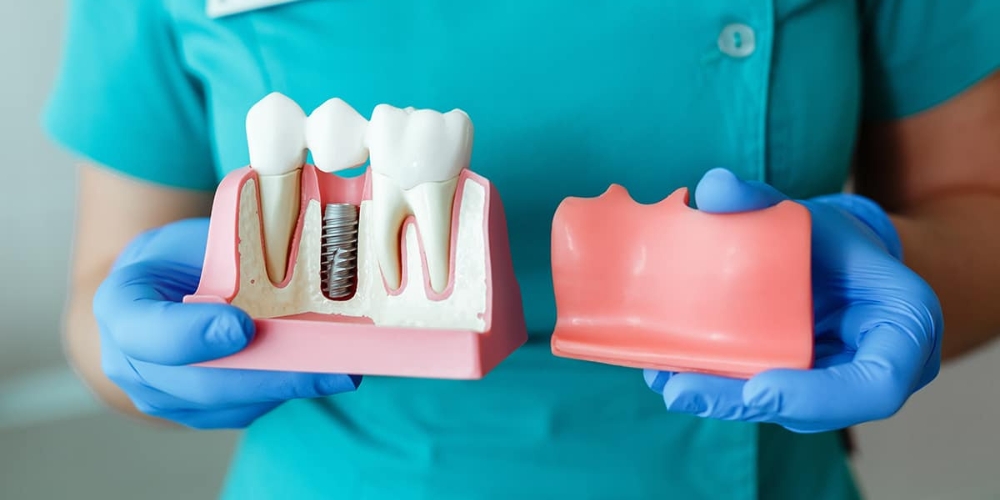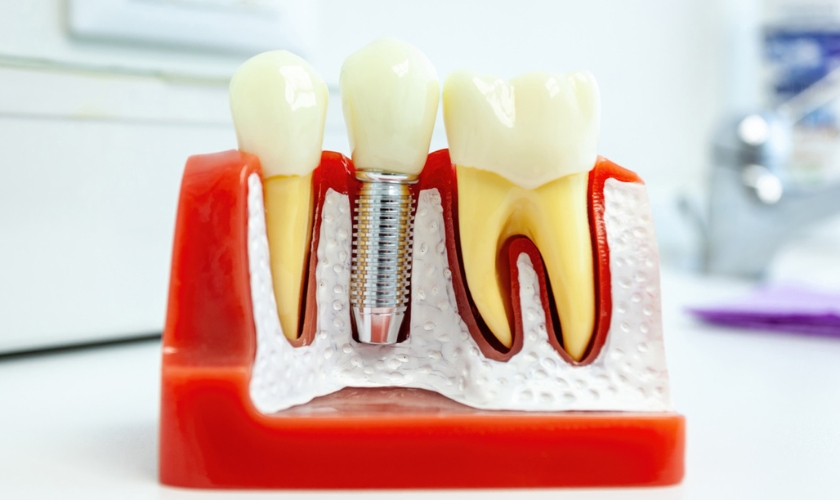
Wondering if dental implants are the right choice for you? These have revolutionized modern dentistry, offering a reliable solution for replacing missing teeth. Known for their durability, functionality, and natural appearance, this dental device is growing increasingly popular among patients seeking permanent tooth restoration.
Read this blog to learn about the science behind this dental procedure, how it works, and why it is such an effective solution.
What Exactly Are Dental Implants?
These are artificial tooth roots made from biocompatible materials designed to replace missing teeth. These form a sturdy foundation for your fixed or removable replacement teeth. Its components include:
- This screw-like titanium post is surgically inserted into your jawbone to act as the tooth’s root.
- The abutment is a small connector piece that will link the titanium post to your dental crown. It sits above the gumline once the operation site has healed.
- The crown is the visible part of your prosthetic tooth, custom-designed to match the color, shape, and size of your natural teeth.
The Science Behind Dental Implants
Here is how dental implants will work to replace your missing tooth:
Osseointegration
This is a biological process where the titanium post fuses with your surrounding jawbone, creating a stable foundation for the implant.
Titanium is highly biocompatible. So your body will accept it without adverse reactions. Additionally, titanium’s surface encourages your bone cells to attach and grow around it, ensuring a strong bond.
Bone Regeneration
One of the most significant advantages of this dental device is its ability to stimulate bone growth. When you lose a tooth, the surrounding bone can begin to deteriorate over time due to lack of stimulation. This prosthetic tooth can mimic natural tooth roots and apply pressure to your jawbone each time you chew, helping maintain bone density.
Soft Tissue Healing
In addition to bone integration, gum tissue is critical to your procedure’s success. After surgery, the gum tissue should heal and seal around your implant post, protecting it from bacteria and infection. Proper aftercare, and oral hygiene,can ensure your optimal healing.
The Dental Implant Procedure
Here are the steps that you might have to undergo during this dental procedure:
- Your journey begins with a thorough consultation. The dentist will assess your oral health, take X-rays, and create a personalized treatment plan tailored to your needs.
- During the procedure, the dentist will numb your treatment area with local anesthesia. The titanium implant post is then surgically placed into the jawbone.
- They might provide you with temporary restorations for aesthetic purposes during healing.
- It will fuse with your jawbone over the next 3-6 months through osseointegration. This step is crucial for ensuring your implant’s stability and strength.
- Once healing is complete, a minor procedure will attach the abutment to the titanium post. The gum tissue will naturally heal around the abutment within a few weeks.
- In the final step, the dentist will place a custom-made dental crown on the abutment. This crown is designed to blend seamlessly with your natural teeth.
What Are The Benefits of Dental Implants?
Dental implants offer numerous advantages that make them a preferred choice for tooth replacement:
- You can make them last a lifetime with proper care to keep your oral health intact.
- The customized crown will perfectly match your surrounding teeth.
- This dental device can restore full oral function, allowing you to eat and speak with confidence.
- Prosthetic teeth will stimulate the jawbone, reducing the risk of bone loss and maintaining facial structure.
Dental implants are a remarkable solution for replacing your missing teeth. They combine cutting-edge science with natural-looking results. By understanding the science behind them, you can make informed decisions about your oral health.
Considering this dental treatment? Consult a qualified dentist to explore your options and create a personalized treatment plan.





